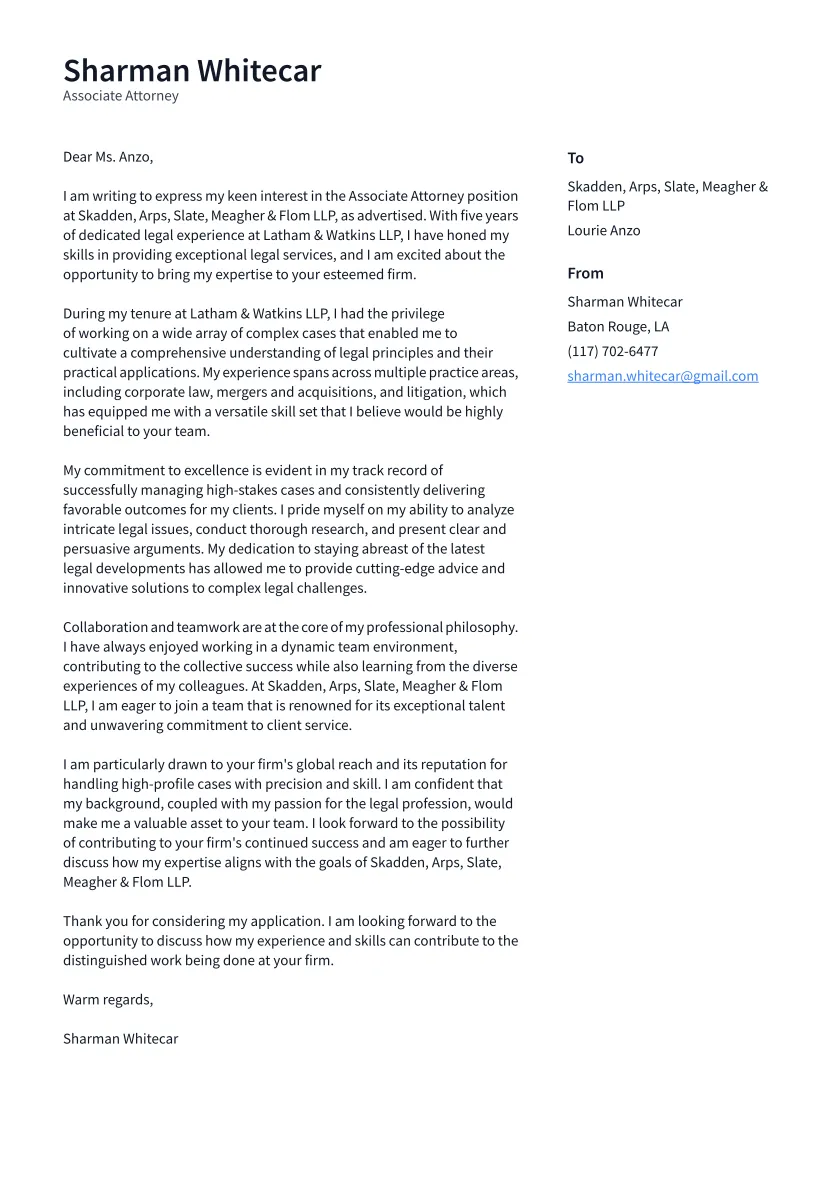What is an Associate Attorney Cover Letter?
An associate attorney cover letter is a crucial document that accompanies your resume when applying for a position as an associate attorney. It serves as an introduction, allowing you to showcase your qualifications, experience, and personality in a way that a resume alone cannot. This letter is your first chance to make a strong impression on a potential employer, demonstrating why you are the ideal candidate for the role. It should highlight your relevant skills, experiences, and express your genuine interest in the position and the firm. A well-crafted cover letter not only provides context to your resume but also demonstrates your communication skills, attention to detail, and professionalism. Therefore, investing time and effort in creating a compelling cover letter is essential for a successful job application. Remember, it’s about making a strong case for why you’re the best fit and why they should consider you for an interview.
Key Components of an Associate Attorney Cover Letter
A comprehensive associate attorney cover letter includes several key components. Each part contributes to painting a complete picture of your qualifications and suitability for the role. Understanding these elements ensures you create a letter that is both informative and persuasive. By addressing each aspect, you demonstrate professionalism and attention to detail, which are crucial traits for a successful attorney. The key components work together to tell a cohesive story of your professional journey, making it easier for the hiring manager to understand your value and why you’re a good fit for their firm.
Header Information
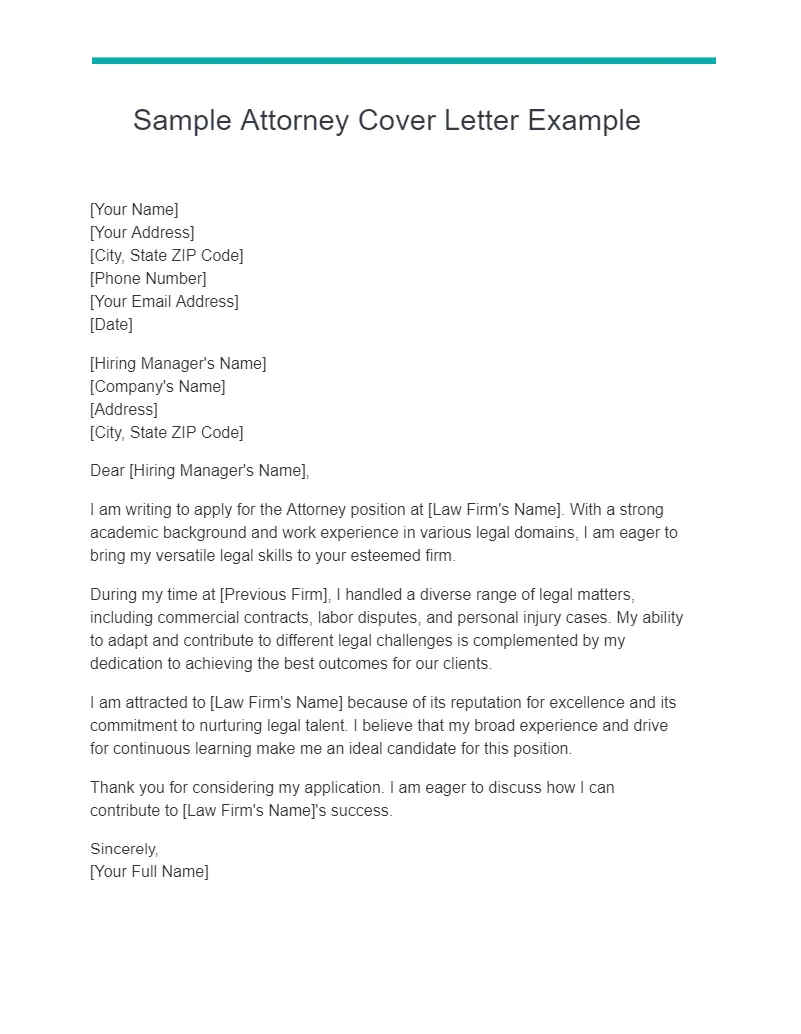
The header should include your full name, address, phone number, and email address. This information ensures the recipient can easily contact you. Ensure this information is current and professional.
Contact Information
This is a duplication of the header information but ensure that it’s clear and easy to read.
Date
Include the current date, which shows the letter’s timeliness.
Recipient Information
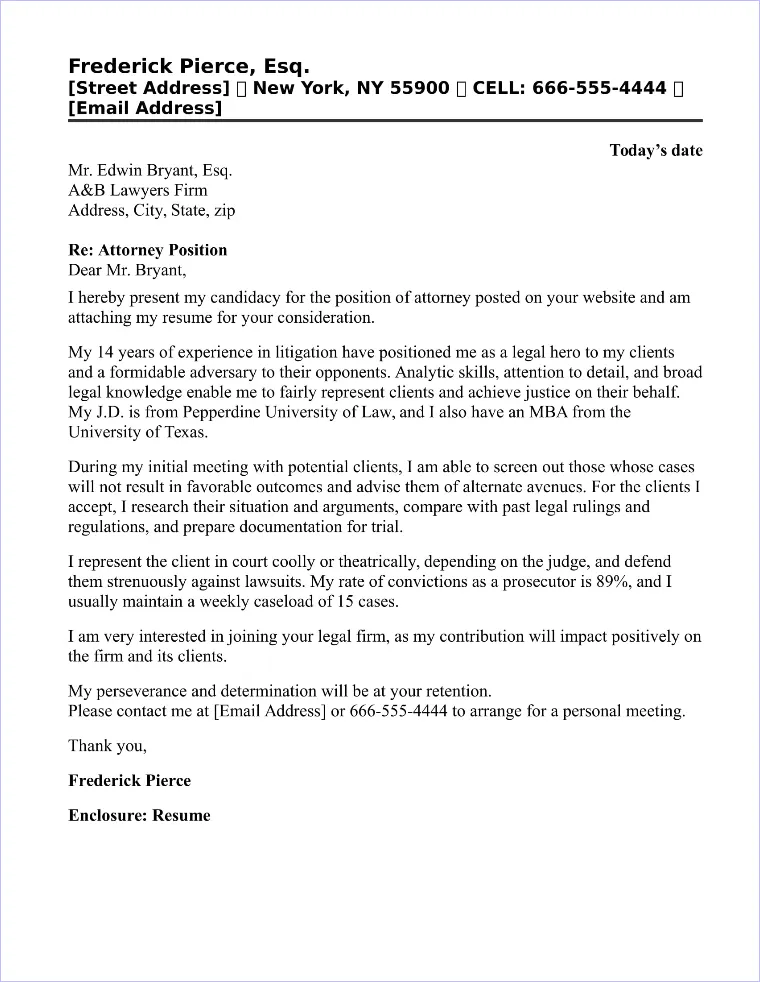
Address the letter to the hiring manager, if possible, or use a professional title like ‘Hiring Committee’. Knowing the recipient’s name adds a personal touch.
Opening Paragraph: Grab Their Attention
Start with a compelling opening that immediately grabs the reader’s attention. State the position you are applying for and briefly mention where you found the job posting. You can also include a brief, impactful statement about your key qualifications or your excitement for the opportunity. Make sure it aligns with the job description. For example, a direct and confident opening such as ‘I am writing to express my keen interest in the Associate Attorney position advertised on [Platform]’ is a great start. It sets a clear tone and shows your proactive approach.
Highlighting Your Qualifications
This section is where you showcase your key skills and experiences. Focus on the qualifications that align with the job description. Use specific examples to illustrate your abilities, quantifying your achievements whenever possible. This makes your claims more credible and memorable. For instance, if the job requires strong research skills, mention a specific case or project where you successfully conducted extensive legal research. Highlight your successes and how you’ve contributed to past successes.
Relevant Experience and Skills
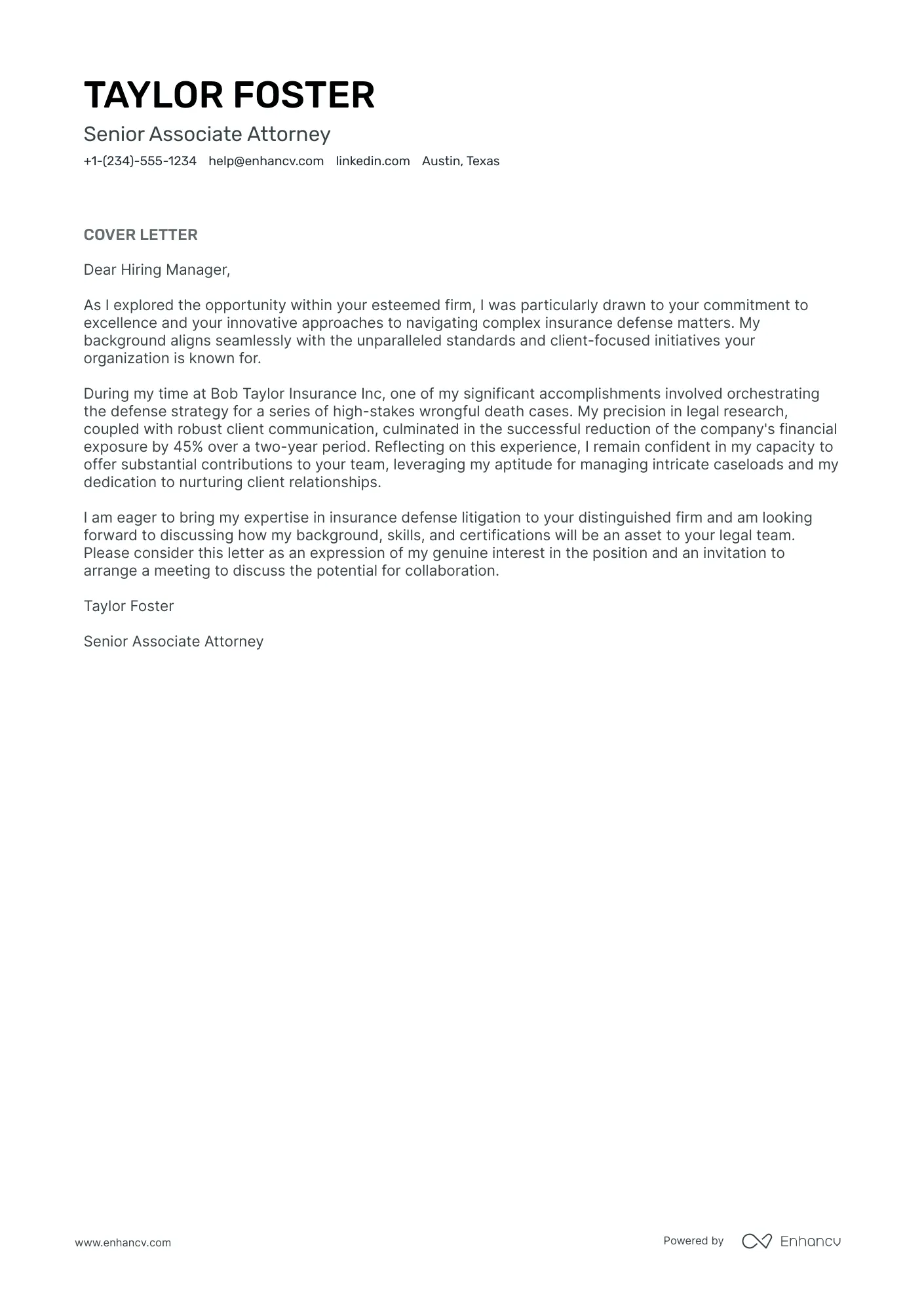
Detail your relevant work experience, including internships, clerkships, or previous attorney positions. Clearly explain your responsibilities and accomplishments. Use action verbs to describe your duties, such as ‘drafted,’ ’negotiated,’ ‘researched,’ and ‘represented.’ Quantify your achievements wherever possible; for example, ‘Successfully managed a caseload of over 50 clients’ or ‘Reduced case backlog by 20%.’ Showcasing your practical skills and achievements makes you a more compelling candidate.
Education and Certifications
Provide information about your educational background, including your law degree (JD), the name of your law school, and the year of your graduation. Mention any honors, awards, or specializations you achieved. Include details about your bar admissions and any other relevant certifications, such as a specialization in a particular area of law (e.g., intellectual property, environmental law). Make sure your educational background aligns with the specific requirements and preferences of the law firm.
Showcasing Your Interest in the Firm
Demonstrate your genuine interest in the firm and the specific position. This involves more than just stating that you are interested; it requires showing you have researched the firm and understand its values, culture, and areas of practice. Explain why you are drawn to this particular firm and how your skills and goals align with their mission. This will show the hiring manager that you are genuinely invested in the opportunity. Refer to specific firm initiatives, values, or recent successes to demonstrate you understand the company’s objectives and how you can contribute to them.
Researching the Firm’s Culture and Values
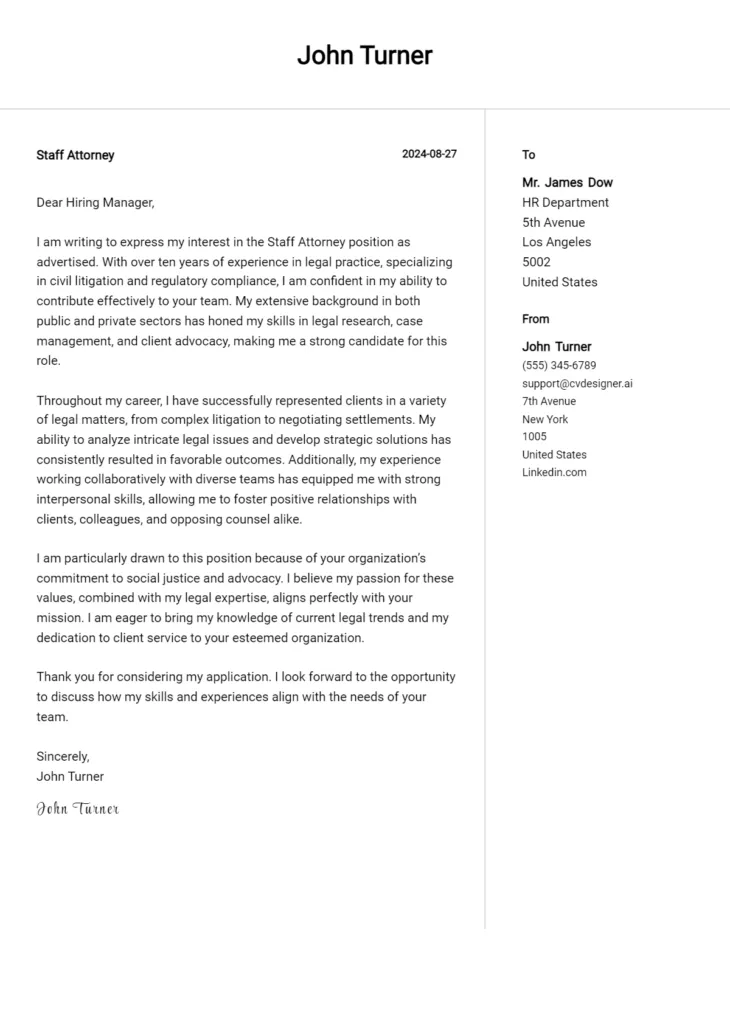
Before writing your cover letter, thoroughly research the law firm. Visit their website, read about their values, and explore their recent cases and news. Look for information about their culture, their approach to clients, and their community involvement. Identify what sets the firm apart and what resonates with your professional values and career goals. Understanding the firm’s unique characteristics will allow you to tailor your cover letter and demonstrate your interest more effectively. This research will enable you to highlight how your skills and experience match their specific needs and expectations.
Tailoring Your Letter to the Specific Position
Customize your cover letter for each position you apply for. This involves more than just changing the job title; it means carefully reviewing the job description and identifying the specific skills and experiences the firm is seeking. Then, align your skills and experiences to address those requirements. Use the language from the job description and provide concrete examples of how you have demonstrated those skills in the past. A personalized cover letter shows that you have taken the time to understand the firm’s needs and that you are a strong match for the role.
The Closing Paragraph: Call to Action
End your cover letter with a strong closing paragraph that reinforces your interest and prompts the reader to take action. This is your final opportunity to leave a positive impression and encourage the hiring manager to contact you. Make sure to thank the reader for their time and consideration. Clearly state your availability for an interview and how they can reach you. Express your enthusiasm about the possibility of discussing the opportunity further and reiterate your confidence in your ability to contribute to the firm. Be sure to include a clear call to action.
Expressing Gratitude and Offering Availability
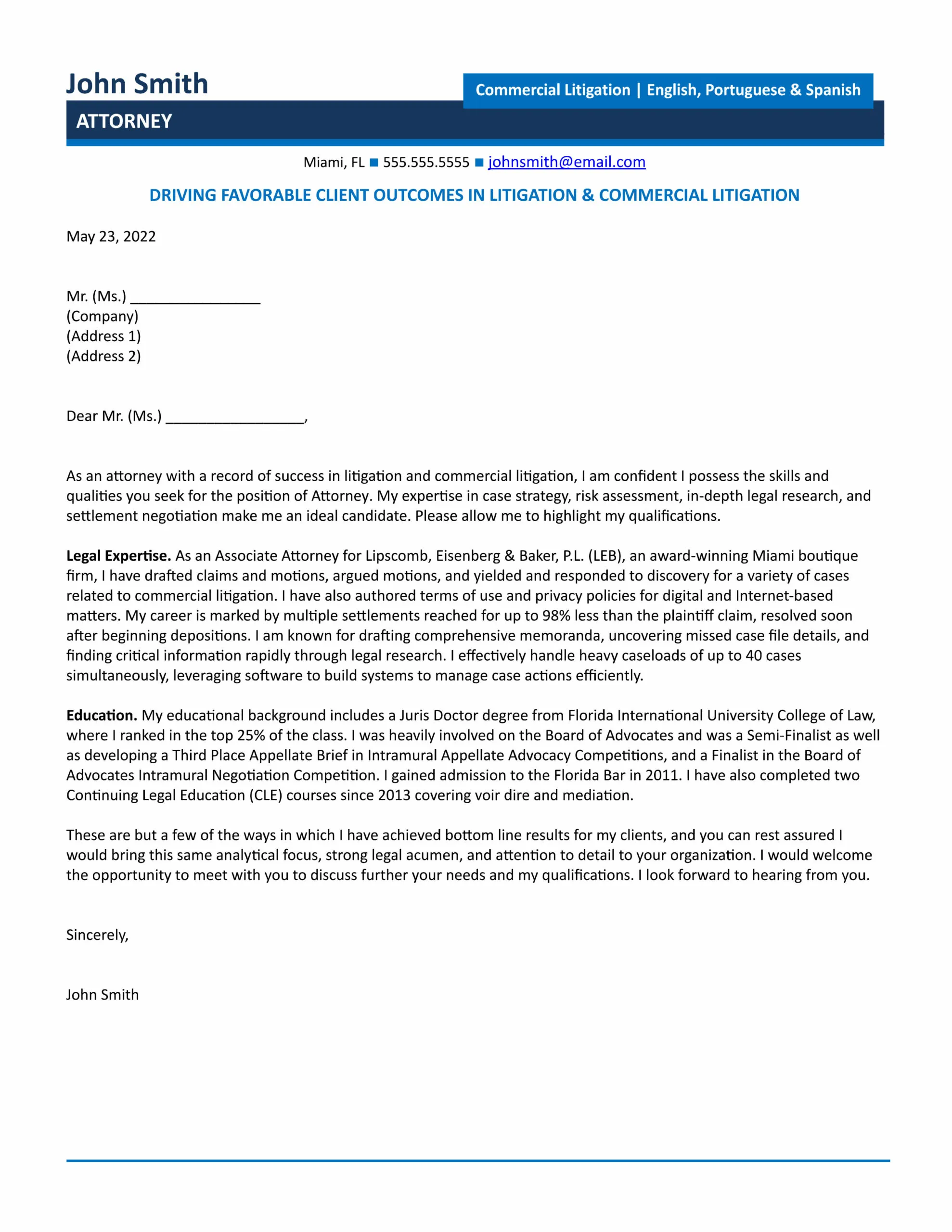
Thank the hiring manager for their time and consideration. Express your appreciation for the opportunity to apply for the position. Clearly state your availability for an interview, including how you can be contacted. For example, ‘I am available for an interview at your earliest convenience and can be reached at [Phone number] or [Email address].’ This conveys professionalism and eagerness.
Proofreading and Editing Your Cover Letter
Before submitting your cover letter, carefully proofread it for any errors in grammar, spelling, and punctuation. Ensure that the language is clear, concise, and professional. Have a friend, mentor, or career counselor review your cover letter for feedback. A well-written, error-free cover letter demonstrates your attention to detail and commitment to excellence, both crucial qualities for an associate attorney. A cover letter with errors can reflect poorly on your qualifications and professional abilities.
Common Mistakes to Avoid
Avoid common mistakes that can undermine your application. These include generic cover letters that do not tailor to the specific role, errors in grammar and spelling, and overly lengthy letters. Do not include irrelevant information or information that does not pertain to the job description. Avoid negative language or discussing previous employment in a negative light. By avoiding these mistakes, you increase your chances of a favorable review and an interview invitation. The key is to present yourself as a professional who has a clear understanding of the legal field and the specific firm where you’re applying.
Formatting and Presentation Tips
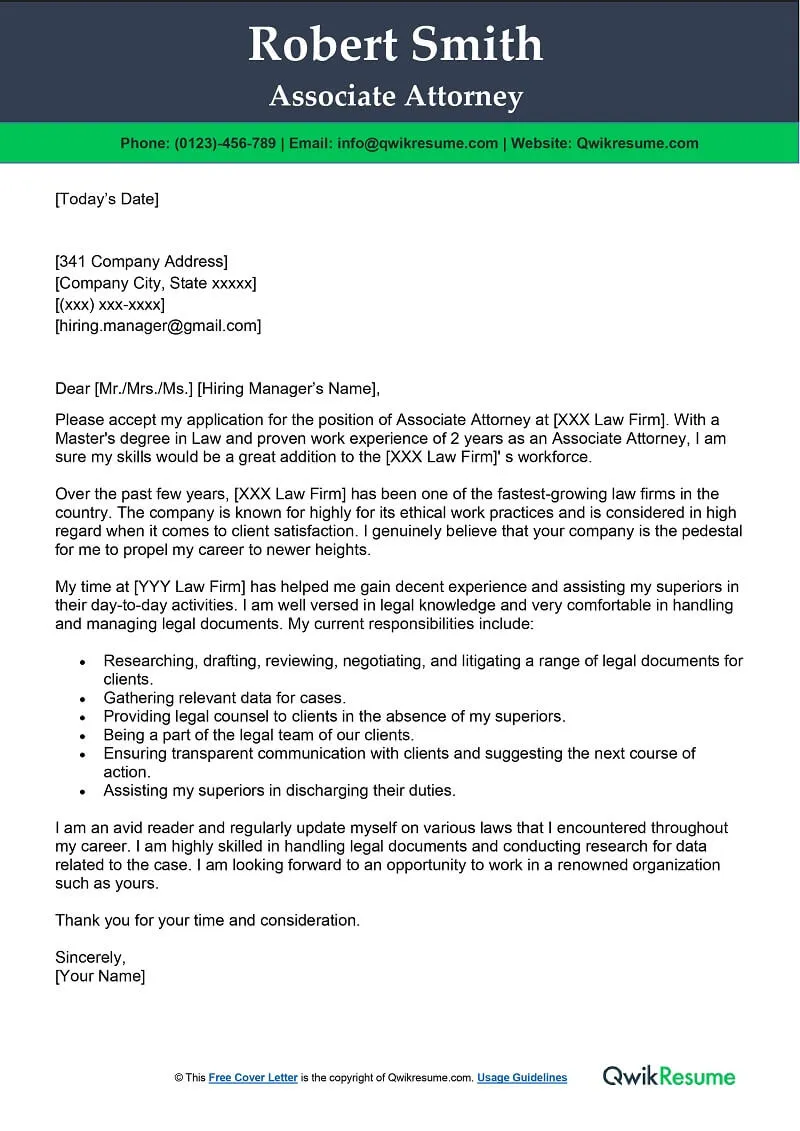
Use a professional and easy-to-read font, such as Times New Roman, Arial, or Calibri, with a font size of 11 or 12 points. Maintain consistent formatting throughout the document. Use single spacing within paragraphs and double spacing between paragraphs. Keep your cover letter to one page in length. Use clear headings and bullet points to make the document easy to scan. Ensure that your cover letter looks neat and organized, which is important for first impressions.
Using Keywords Effectively
Incorporate keywords from the job description into your cover letter to help your application pass through applicant tracking systems (ATS) and to demonstrate your relevance to the role. Identify the key skills, experiences, and qualifications the employer is looking for and include them in your letter. Ensure you use keywords naturally and authentically without sounding forced or irrelevant. Strategically using keywords can help your application stand out and increase your chances of getting noticed by a hiring manager. However, do not stuff your cover letter with keywords; the focus should remain on demonstrating your skills and experiences.
Example Associate Attorney Cover Letter
Here is a sample associate attorney cover letter demonstrating the key elements discussed earlier. This example can be adapted and tailored to your specific qualifications and the requirements of the job. Remember to modify the details to fit your individual experiences and the specifics of the position. Use this as a guideline to create your own customized cover letter, which shows your understanding of how to create a compelling job application for the specific firm.
Where to Find Cover Letter Templates and Samples
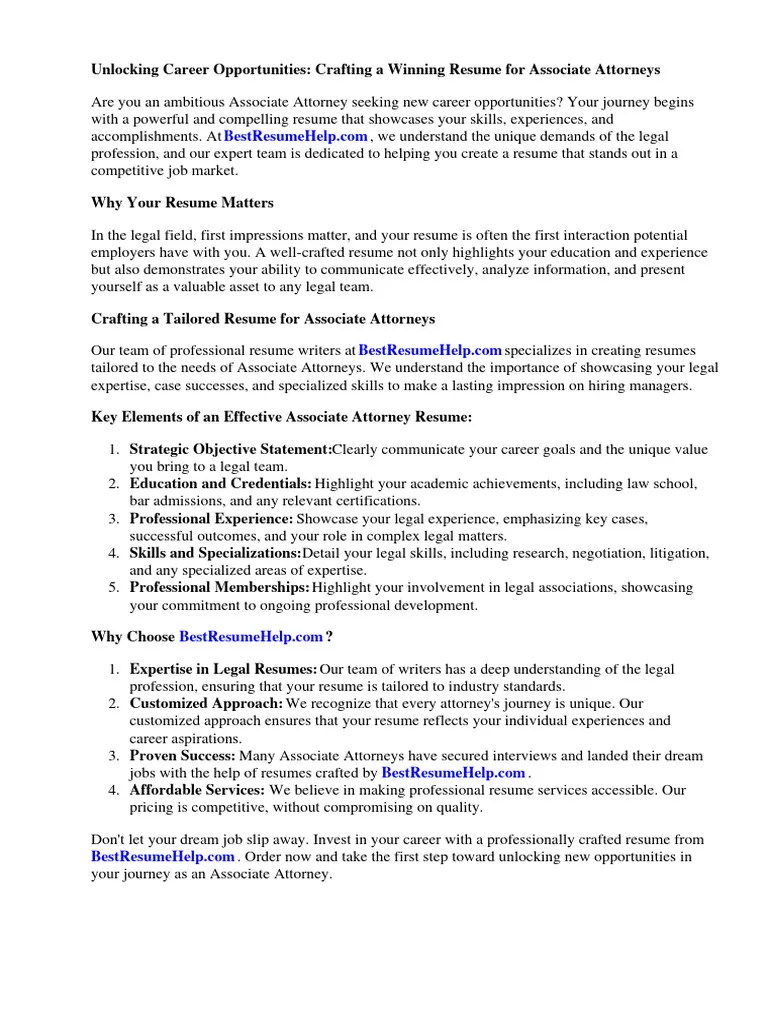
Explore online resources for cover letter templates and samples. Websites such as LinkedIn, Indeed, and various career websites provide numerous templates that can help you structure your cover letter effectively. These resources can offer different formats and examples tailored to various fields of law and experience levels. However, customize each template to reflect your personal skills and the specific requirements of the job you are applying for. Adapting a template can give you a strong foundation and help you create a polished, professional cover letter.
